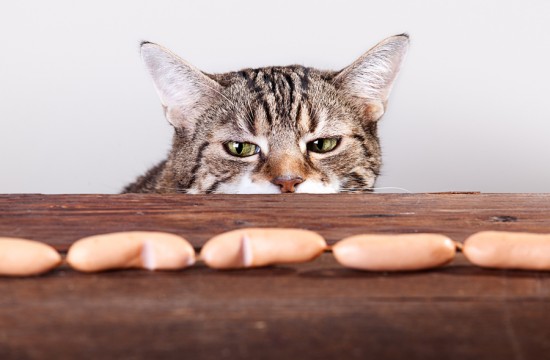

Obesity in cats is, unfortunately, on the rise and it is now the leading cause of most preventable disease and conditions in your feline companion. It is estimated that over one quarter of cats are overweight, but treating the issue is not always easy. The cause of obesity however, is simple - the intake of energy (food) is greater than the energy used (exercise). This deposits excess fat over the body creating the condition of being overweight, as it would in a human. This puts unnecessary strain on the internal organs, joints and bones and can also be responsible for many chronic, serious and sometime fatal diseases such as diabetes mellitus, heart disease and respiratory problems. There is also an increased risk for the cat should it need to be anesthetised during an operation.
The increasing numbers of exclusively indoor housed cats is partly to blame. Cats are usually naturally energetic, inquisitive creatures who love nothing more than playing outside. When a cat lives permanently indoors, the chance for exercise is greatly limited and most owners do not balance the amount of food fed with the exercise done. It is the owner's responsibility to make sure they have the chance to play and exercise, so why not try a few of the following to get Tiddles fighting fit and happy? Scrunched up paper balls and pieces of ribbon at the most basic end of the spectrum are always popular to chance and pounce on or why not try attaching them to a helium balloon which will move by itself when your cat tugs on it or bats it? Laser pointers are useful as the little red dots can be aimed in all nooks and crannies, and are perfect for pouncing on. Just take care not to shine it directly into your cats' eyes. Your input into helping your cat be active is invaluable towards helping it loose excess weight.
The increase in use of dry cat food for either outdoor or indoor cats is also a factor. The feeding guidelines laid down by the manufacturer can seem very lean and mean once they are in your cats bowl and the temptation is there to top it up with a little more. But try this tip and you may change your mind. Weigh a portion of food into the bowl, cover with warm water and leave overnight. In the morning you will see how much the food has swollen up - in reality, this is how much your cat is eating! In reality, the amount of food most cats receive is more than enough for two cats. But simply cutting down your cats food may not be enough to stem the flow once it has started. In the first instance, it is wise to seek your vets advice. On occasion, obesity can be caused by underlying medical issues and these need to be ruled out first. If this is not the case, the vet can advise you on the best course of action, including the best type of food for you cats age and needs. It is important to realise that a programme of weight loss will take time, patience and will not happen overnight. On average, it will take around 8 months for your cat to reach its target weight and to help you help your cat reach its goal, monthly weigh ins are essential. Many vets offer this service free as well as 'moggie fit club' where you can receive support and advice. In addition, why not try following these tips?
Your cat gives you so much, so why not give her something back?
Copyright © 2005-2016 Pet Information All Rights Reserved
Contact us: www162date@outlook.com